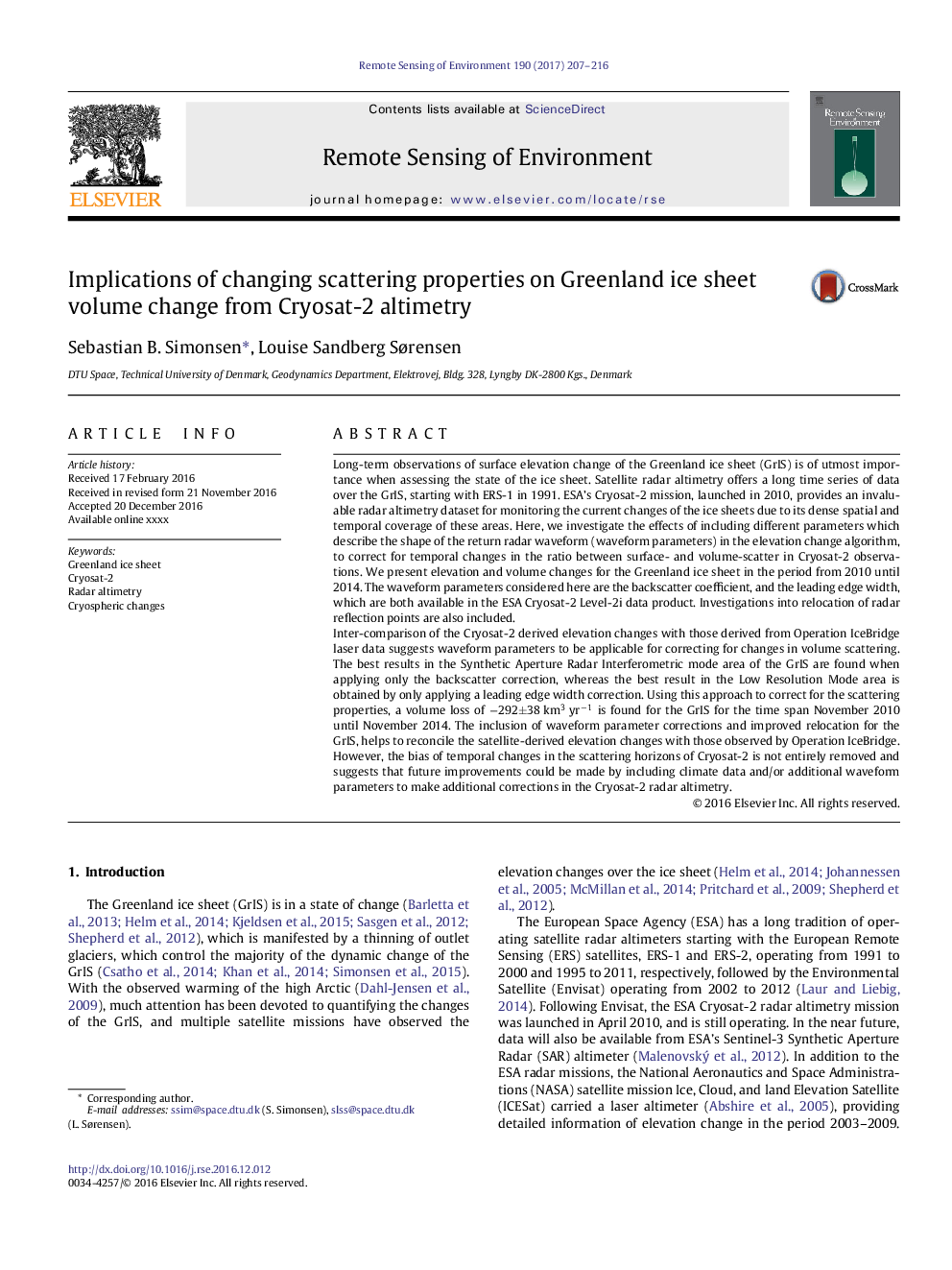| Article ID | Journal | Published Year | Pages | File Type |
|---|---|---|---|---|
| 5754784 | Remote Sensing of Environment | 2017 | 10 Pages |
Abstract
Inter-comparison of the Cryosat-2 derived elevation changes with those derived from Operation IceBridge laser data suggests waveform parameters to be applicable for correcting for changes in volume scattering. The best results in the Synthetic Aperture Radar Interferometric mode area of the GrIS are found when applying only the backscatter correction, whereas the best result in the Low Resolution Mode area is obtained by only applying a leading edge width correction. Using this approach to correct for the scattering properties, a volume loss of â292±38 km3 yr â1 is found for the GrIS for the time span November 2010 until November 2014. The inclusion of waveform parameter corrections and improved relocation for the GrIS, helps to reconcile the satellite-derived elevation changes with those observed by Operation IceBridge. However, the bias of temporal changes in the scattering horizons of Cryosat-2 is not entirely removed and suggests that future improvements could be made by including climate data and/or additional waveform parameters to make additional corrections in the Cryosat-2 radar altimetry.
Related Topics
Physical Sciences and Engineering
Earth and Planetary Sciences
Computers in Earth Sciences
Authors
Sebastian B. Simonsen, Louise Sandberg Sørensen,
